Keeping your machine in check is something every welder should do. Maintenance is not as complicated as it seems, but it can significantly save your money and time.
Depending on the welding process and type of equipment, maintenance can be different.
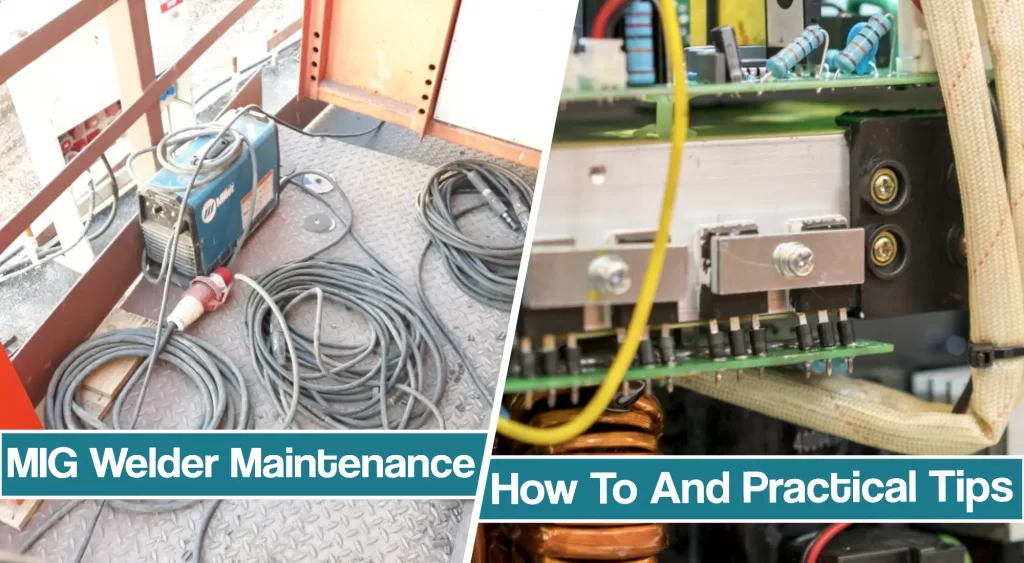
Maintaining your MIG welder might be slightly more challenging, but it will allow it to perform better, last longer, and have better safety features. So read this MIG welding maintenance article to learn the proper way.
MIG Welder Maintenance
Wire welders such as MIG and Flux-cored machines feature more peripheral items than Stick devices. You will have to take care of dust, a complex wire drive system, MIG welding torch, cables and connections, and shielding gas cylinder concerns.
However, paying attention to your equipment will ensure many years of high-quality welds and easy welding.
Remember to always unplug your machine before performing any maintenance tasks!
Equipment Cleaning
Clean equipment is a foundation of proper welding. You should include cleaning into your regular maintenance schedule for the best results. First, make sure you unplug your MIG welding machine and remove all the covers. Then use the dry air hose to remove any dirt, dust, and debris from the power supply and wire drive mechanism.
Dust and dirt may clog your cooling fans which can lead to overheating and finally malfunctioning. In addition, dirt and debris can cause wear of equipment parts, which you will have eventually to replace or repair. So, all you need to do is occasionally clean the dirt, dust, and debris, and you can be sure you don’t have to spend money repairing your welder.
Wire Feed Mechanism Maintenance That Prevents Birdnesting
Once the dirt or dust reaches your wire feed mechanism, it can eventually lead to a buildup that can cause wire feed issues, such as birdnesting.
Steel drive rolls are usually sturdy and don’t wear, but the dirt can significantly affect the wire feed. You should use dry air to blow off any dirt out of your wire feed mechanism at least once a week to deal with this issue.
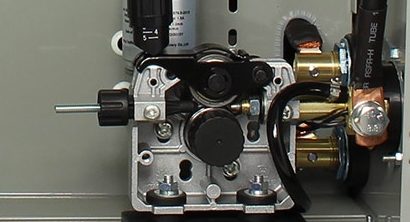
Drive Rolls cleaning
If you cleaned the wire feed mechanism but still notice issues regarding the wire feed, you should take out the drive rolls. Then, make sure you clean the groves that are responsible for wire feed. Doing so will help you prevent birdnesting and ensure smooth thin MIG wire feed.
However, wire feed issues may occur due to high tension pressure. Nearly all modern machines feature a marked tensioner, so you make sure you follow the recommendations. High tension pressure on the drive rolls can lead to birdnesting.
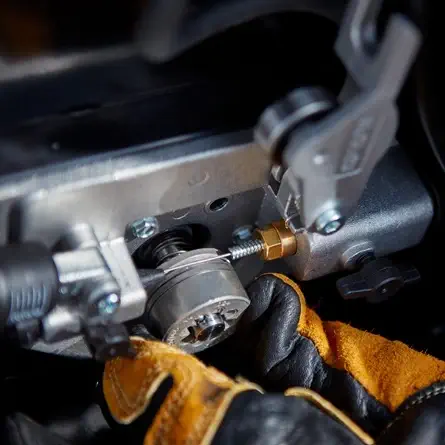
MIG Welding Gun Maintenance ( Contact Tip, Nozzle, and Gass Diffuser)
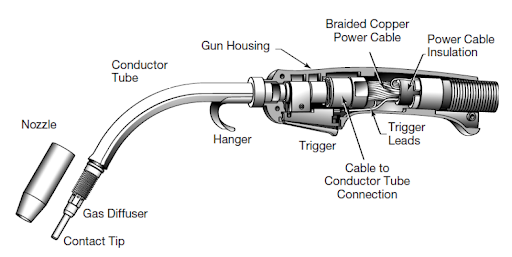
One of the main parts of your MIG welder is the gun nozzle, which serves the function of shielding the weld. Unfortunately, it can often get lodged with spatter that has to be cleaned. Keeping the nozzle clean will ensure regular gas flow and protect your weld. The best way to keep the nozzle clean is with a nozzle dip, which not only cleans it but also prevents spatter from sticking to the nozzle.
A diffuser is screwed into the gun tube which then disperses the shielding gas. The same as with the nozzle, spatter can build up on the diffuser and inhibit gas flow. A good piece of advice is to unscrew the cone and check the diffuser so you can see if it’s not clogged. If you notice some spatter there, use a rag or better yet a brush to wipe it clean.
Contact Tip Maintenance
The best way to keep the gun contact tip in the best possible shape is to avoid touching the workpiece with the tip. At any point unwanted contact between the workpiece and the tip is made, the tip gets damaged due to electricity. Even with your best possible effort, the hole diameter of the contact tip will eventually elongate after significant usage. So it is best to replace them from time to time.
Let the MIG Gun Cool Before you Change a Contact Tip
Something that sounds rather obvious but what many welders tend to forget is to let the MIG gun cool down first before rushing to change the contact tip. You don’t want to burn your hands as things can get really hot.
Use the Correct Contact Tip Size
If a wrong size contact tip is used it can cause a lot of problems, especially with the wire feed. If the contact tip hole has a narrow diameter it can cause friction with the wire and cause all kinds of hell while welding.
The same problem can occur if the contact tip is worn off, the hole gets enlarged and the wire starts to move around the contact tip breaking the arc stability and consistency. Having a spare contact tip around is a practice of a good welder.
Properly Tighten the Contact Tip
The same problems mentioned above can happen if the contact tip is not properly screwed. Besides damaging the wire and hampering the wire feed it can also affect the electrical current transfer and overall electrical conductivity.
Gas Nozzle and Gas Diffuser
To put it simply, a gas nozzle for MIG welders exists to direct the shielding gas into the weld puddle in the most effective way possible. A gas diffuser exists to tighten up the contact tip and prevent atmospheric air from entering the liner.
Both of these consumables can wear off after heavy use and should be replaced from time to time. Since a home welder is not doing any heavy-duty or industrial work, you don’t need to do it as often and you don’t need to buy expensive consumables. Cheaper ones will do as long as you take care of them.
Liner cleaning
MIG welding wire runs from the spool, through drive roll mechanism, into a MIG torch liner. If you fail to clean the dirt or dust, it may lead to a buildup that can clog the liner. To deal with this problem, make sure you use compressed gas to blow out dirt from the tip of the contact tip at least once a week. If you are not using your welder regularly, you should do it each time you decide to weld.
In addition to dirt, wire feed issues may occur due to improper liner size. If your liner is too short, you will have to deal with a dirt and dust buildup between the liner and the retaining head. Next, make sure you don’t flatten the liner by rolling over heavy carts over your lead. Otherwise, you will have to replace it.
Cables and Connections
Before you start welding, always inspect your cables for damage. Damaged cables can affect the arc stability; hence they will result in poor welds. In addition, make sure there are no loose connections. Loose connections can lead to a heat buildup in cables, eventually damaging your MIG gun or components.
Finally, you should check your ground. A bad ground will result in erratic welds, so you will have to adjust voltage constantly to achieve decent quality. Luckily, you can deal with lousy ground quickly, and the results will be satisfying.
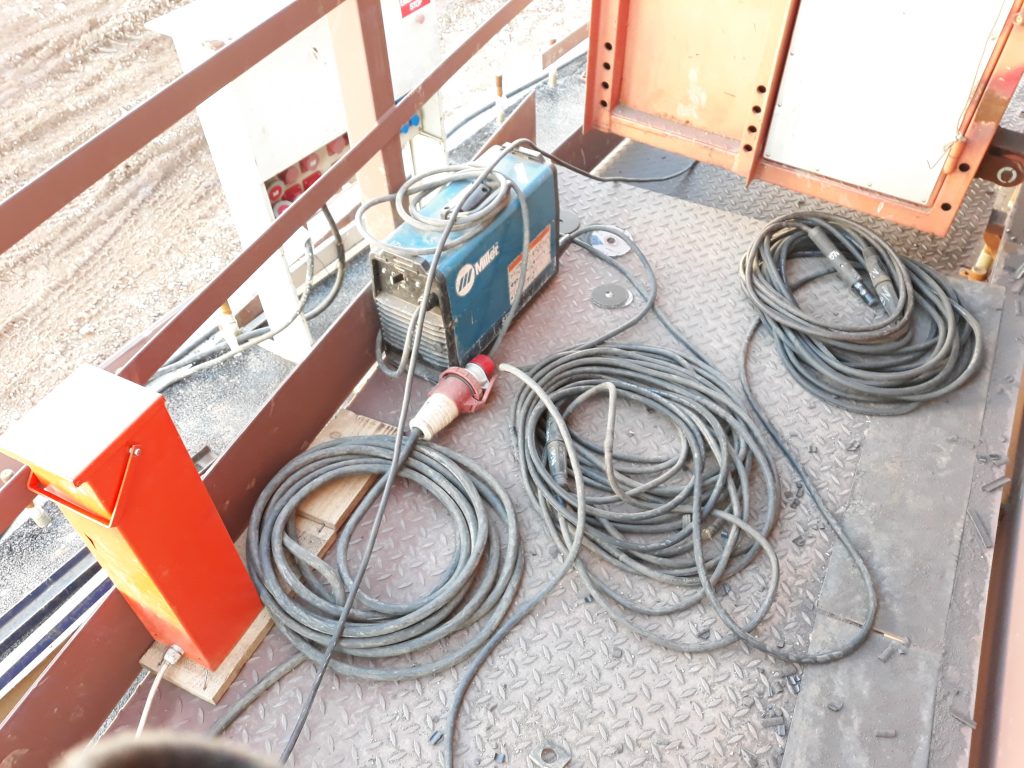
Simply inspecting the cables prior to welding will save you time trying to figure out why your arc is inconsistent or why you produce poor welds, with the settings that worked just fine yesterday.
Shielding Gas Cylinder Concerns
You must pay extra attention to the cylinder since you will need a shielding gun to use your MIG welder. First, make sure the cylinder is always chained. Chain it either to the machine or in a safe place in the shop to ensure it doesn’t fall.
If your cylinder falls over, landing onto a regulator, the gas will try to escape, causing a cloud that might hurt nearby welders. So when you are not using the gas, remove the regulator and install a protection cap to the top of the bottle. Protecting the valve system will prevent rupture.
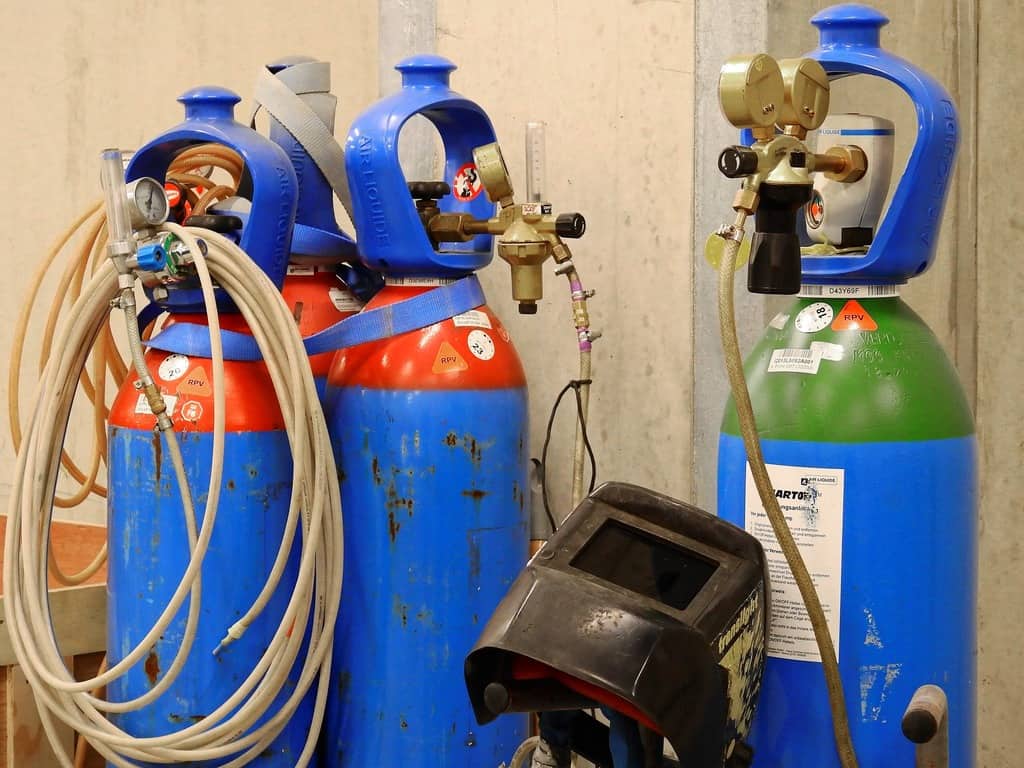
In addition, gas leakage may occur due to poor gas hose shape. Therefore, you should make sure you coil the hose tightly and store it properly to avoid tangling, twisting, or kinking. If you notice excessive shielding gas consumption, make sure there are no holes in your gas hose.
MIG Welding Maintenance Tips and Troubleshooting
The simplest way to protect your machine from dust is to keep a cover on top of it when you are not using it. Therefore, the cover is essential if you are using your welder occasionally. If you cannot maintain a MIG gun correctly, you can always ask a licensed technician to inspect it periodically.
Even though MIG welding maintenance might be slightly more complex than Stick, MIG wire is copper coated, meaning you don’t need to worry about rust. In addition, you don’t need to buy a separate rod oven.
One of the signals that something’s wrong with your equipment is weld porosity. If you notice small holes on your weld, it signifies that you’re out of gas, the nozzle is clogged, or there’s a hole in your shielding gas line.
If your arc is inconsistent, pay attention to ground or cables. In addition, if your gun is not feeding wire well, pay attention to a wire drive mechanism.
Warranty and Availability of Spare Parts
Every sane person is going to go for a machine with a longer warranty. Usually, the best MIG welder will come with a better warranty, but it also depends on the brand.
However, besides the warranty, you also have to take into account the availability of spare parts.
Certain parts are harder to find, but some brands are polite enough to send additional parts if you happen to need them.
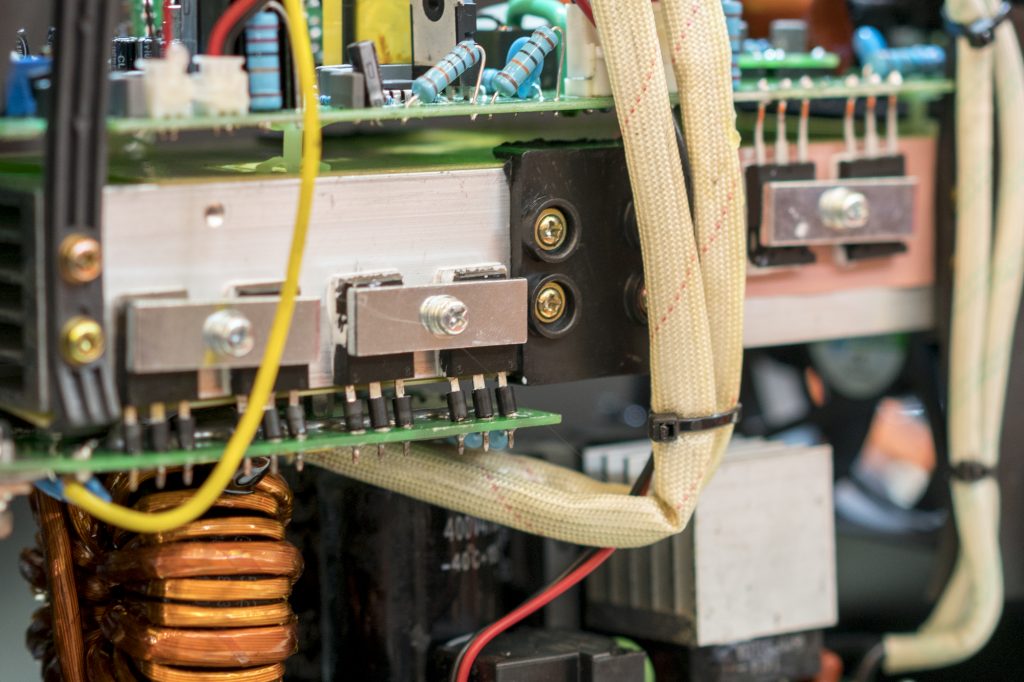
Also, it is good practice to choose a machine whose spare parts are more accessible in retail. Politeness goes a long way, as a firm with better customer support is going to earn more points. If you explain the problem thoroughly, you just might be able to get those spare parts that we were talking about faster than expected. For example one of my colleagues purchased a MIG welder from YesWelder, the one up there that I add as the best budget option.
The wire feed speed control PCB was not working and made the machine opposite but it was not the problem with the PCB itself just the connector was plugged in the wrong place but no one saw it. They send him a new PCB and a new wire feeder just in case the problem was not properly diagnosed. So pick a welder from companies like these that get out of their way to assist the customer and avoid bad reviews.
Summing Things Up
MIG welder maintenance can be challenging since you will have to pay attention to the machine including cables and connections, MIG torch, wire feed mechanism, and shielding gas cylinder. However, regular inspections, dusting, and proper storing may result in years of satisfied welding.
If you clean the equipment weekly, you can be sure there is no dirt or dust that might damage your machine. In addition, a clean wire drive mechanism will provide a smooth wire feed, every time. Finally, MIG torch is an essential part of your welder, and taking care and choosing proper contact tips and nozzles will result in exceptional weld quality.
Before you start welding, make sure you check your ground, cables, and connections. Poor ground and loose connection may result in an inconsistent arc, that might even not start. Meanwhile, if you notice holes in your welds, there might be something wrong with the shielding gas distribution, so make sure the regulator is working fine and there are no leaks.
Prior to making a choice, make sure you buy a MIG welder that offers the best warranty options. In addition, read the reviews regarding the customer service, and make certain spare parts, consumables, and accessories are available in your local welding shop.





